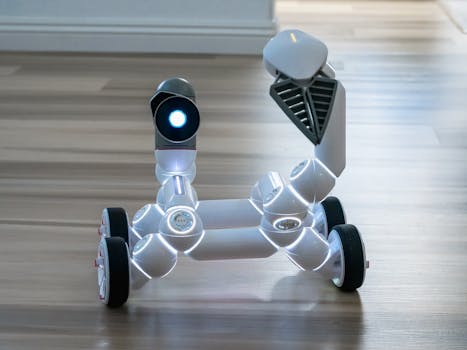
Smart Homes 2025: The Rise of AI-Driven Devices
Smart Homes 2025: The Rise of AI-Driven Devices is transforming the way we live, work, and interact with our living spaces. With the integration of artificial intelligence (AI) and Internet of Things (IoT) technology, smart homes are becoming increasingly intelligent, efficient, and convenient.
Introduction to Smart Homes
A smart home is a residence that is equipped with advanced technology and automated systems to control and monitor various aspects of the home, such as lighting, temperature, security, and entertainment. Smart homes use a combination of sensors, cameras, and machine learning algorithms to learn the habits and preferences of the occupants and adjust the environment accordingly.
The Rise of AI-Driven Devices
AI-driven devices are revolutionizing the smart home industry by enabling devices to learn, adapt, and make decisions based on data and user behavior. These devices use machine learning algorithms to analyze data from various sources, such as sensors, cameras, and user input, to optimize performance, efficiency, and convenience.
Benefits of Smart Homes
The benefits of smart homes are numerous, including:
- Energy efficiency: Smart homes can optimize energy consumption by automatically adjusting lighting, temperature, and appliance usage.
- Convenience: Smart homes can automate routine tasks, such as locking doors, turning off lights, and adjusting thermostats.
- Security: Smart homes can enhance security by providing real-time monitoring, motion detection, and alerts.
- Comfort: Smart homes can optimize indoor air quality, temperature, and lighting to create a comfortable living environment.
Examples of AI-Driven Devices
Some examples of AI-driven devices for smart homes include:
- Smart thermostats: Learn occupants’ temperature preferences and adjust the temperature accordingly.
- Smart lighting: Adjust lighting levels and color based on the time of day, occupancy, and user preferences.
- Smart security cameras: Detect motion, recognize faces, and alert users to potential security threats.
- Smart speakers: Control various smart devices, play music, and provide information using voice commands.
Conclusion
In conclusion, Smart Homes 2025: The Rise of AI-Driven Devices is transforming the way we live, work, and interact with our living spaces. With the integration of AI and IoT technology, smart homes are becoming increasingly intelligent, efficient, and convenient. As the technology continues to evolve, we can expect to see even more innovative and exciting developments in the smart home industry.


